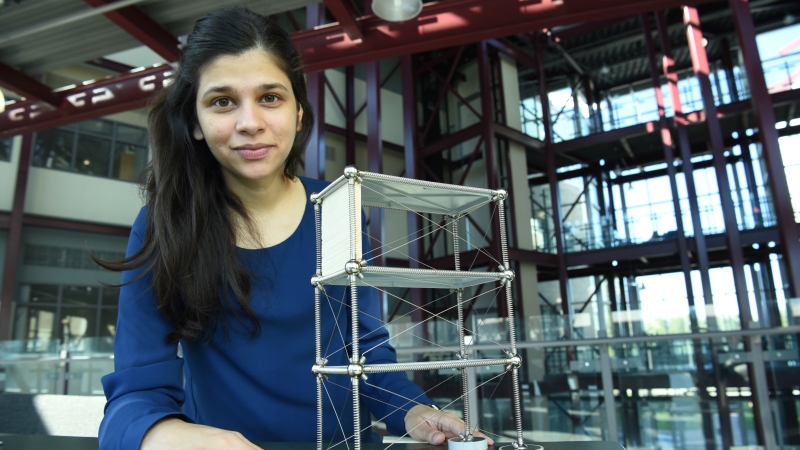Testing the safety of hybrid buildings
Civil Engineering Assistant Professor Dr. Ramla Qureshi is exploring how hybrid wood-steel buildings withstand hazards including fire and earthquakes. If her research demonstrates the buildings are reliable, she believes it could lead to more hybrid buildings being constructed.

Combining steel and wood in building design can make our structures more sustainable, but how do these hybrid buildings handle fire, earthquakes and other cascading events?
UNBC Civil Engineering Assistant Professor Dr. Ramla Qureshi is putting steel-wood hybrid designs to the test as part of a project funded through the Natural Sciences and Engineering Research Council Discovery Grant program.
“Engineers need to have a certain level of reliability in a structure's performance against extreme hazards such as earthquakes and fires throughout the building's life cycle,” Qureshi explains. “Especially in places with considerable seismic activity, such as British Columbia, we need to understand and quantify the risks from such events that can cause damage to, or limit the performance of, such construction.”
By adopting designs with steel frames and using Cross-Laminated Timber or other similar wood products for floor slabs and wall panels, buildings can maintain structural performance and achieve sustainability goals. Replacing concrete with wood has the added benefit of making buildings lighter, decreasing the demand on structural columns and enabling the use of timber in taller structures.
Yet, concerns remain about how these hybrid designs will react when disaster strikes. Qureshi’s research aims to ease those concerns, which may convince more builders to consider hybrid options.
“If a reliable, data-driven understanding of the risks to human life safety and building occupancy can be adequately quantified, along with benchmark estimates of socioeconomic effects of future earthquakes, fires, and cascading events - such as fire following an earthquake - such construction just may see an uptick in public opinion,” she says.
The project, worth $132,000 over five years, will support research from at least five undergraduate students, three master’s students, two PhD students and potentially one post-doctoral fellow.
Qureshi and her research team will use deterministic and probabilistic approaches to determine how they expect the buildings will respond to fire and earthquakes. Then they will build models per industry standards and subject them to the hazards in laboratory conditions. They will also conduct detailed and systematic damage assessments to quantify the reliability of hybrid timber-steel structural elements and systems against designated failure modes.
“Based on the results from this damage assessment, the research team will quantify structural and socioeconomic losses and create catastrophe models for insurance applications,” Qureshi says. “It is also part of the research objectives to translate this knowledge to code provisions and industry-ready software tools.”
Home to the state-of-the-art Wood Innovation Research Laboratory in downtown Prince George makes UNBC the ideal site to conduct this type of research.
“UNBC is one of the national leaders in wood and timber research,” Qureshi says. “Our Master of Engineering in Integrated Wood Design program trains students in advanced structural design for seismic demands, building acoustics, energy efficiency and sustainability.”
